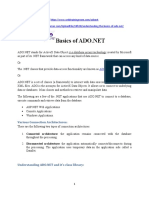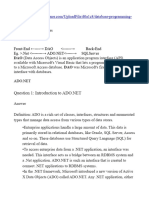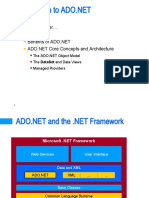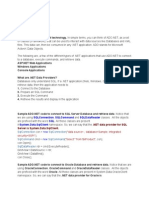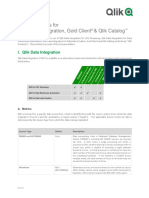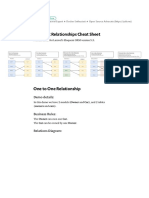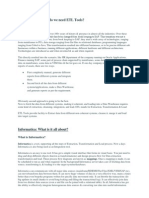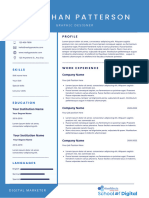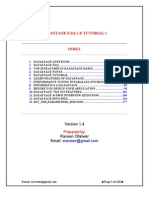0% found this document useful (0 votes)
44 views12 pagesExploring SqlConnection in
ADO.NET is a framework for interacting with data sources like databases and XML files. It uses classes like Connection, Command, DataReader, and DataSet. Applications use ADO.NET to connect to databases, execute commands, and retrieve data. There are two connection architectures - connected which remains connected throughout, and disconnected which automatically connects/disconnects and uses temporary data in a DataSet. Important ADO.NET classes include Connection for managing connections, Command for executing queries, DataReader for retrieving data, DataAdapter for linking DataSets to databases, and DataSet for containing related DataTable objects.
Uploaded by
jerlin sundariCopyright
© © All Rights Reserved
We take content rights seriously. If you suspect this is your content, claim it here.
Available Formats
Download as DOCX, PDF, TXT or read online on Scribd
0% found this document useful (0 votes)
44 views12 pagesExploring SqlConnection in
ADO.NET is a framework for interacting with data sources like databases and XML files. It uses classes like Connection, Command, DataReader, and DataSet. Applications use ADO.NET to connect to databases, execute commands, and retrieve data. There are two connection architectures - connected which remains connected throughout, and disconnected which automatically connects/disconnects and uses temporary data in a DataSet. Important ADO.NET classes include Connection for managing connections, Command for executing queries, DataReader for retrieving data, DataAdapter for linking DataSets to databases, and DataSet for containing related DataTable objects.
Uploaded by
jerlin sundariCopyright
© © All Rights Reserved
We take content rights seriously. If you suspect this is your content, claim it here.
Available Formats
Download as DOCX, PDF, TXT or read online on Scribd
/ 12

